I. Introduction
A. Brief Overview of Procurement Presentations
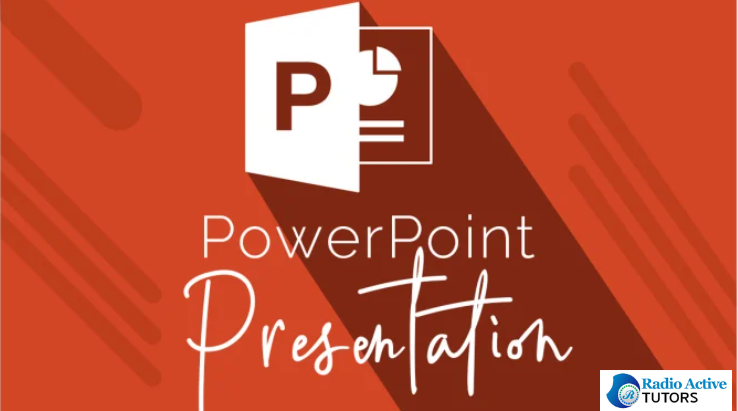
Procurement PowerPoint slides serve as a crucial tool for presenting a concise yet comprehensive overview of the procurement process. These presentations typically encompass key elements such as sourcing, vendor selection, contract negotiation, and supply chain management. The slides often outline the strategic importance of effective procurement in achieving organizational goals, cost savings, and mitigating risks.
Visual aids, charts, and graphs are commonly employed to illustrate data and trends, facilitating a clearer understanding for the audience. Additionally, procurement presentations may touch upon ethical considerations, compliance, and the integration of technology to streamline processes. Overall, these slides are designed to impart essential knowledge about procurement practices, fostering informed decision-making and collaboration within the business environment.
B. Importance of Effective Procurement Communication
Effective communication is paramount in procurement, and Procurement PowerPoint slides play a vital role in conveying the importance of this aspect. These slides emphasize that clear and transparent communication is essential at every stage of the procurement process. By highlighting the significance of articulating requirements, expectations, and specifications, the presentation underscores how effective communication fosters collaboration with suppliers, reduces misunderstandings, and ultimately leads to successful procurement outcomes.
Visual aids, bullet points, and concise messaging on the slides reinforce the idea that precise communication enhances decision-making, minimizes risks, and promotes a streamlined procurement workflow. The presentation serves as a reminder that in the complex landscape of procurement, the ability to communicate effectively is a key driver of efficiency and successful business relationships.
II. The Basics of Procurement PowerPoint Slides
- Understanding Your Audience

In crafting Procurement PowerPoint slides on the basics of procurement, a fundamental consideration is understanding the audience. These presentations recognize that procurement involves various stakeholders with diverse backgrounds and interests, ranging from executives to procurement professionals and other team members.
The slides aim to cater to this diverse audience by presenting information in a clear, accessible manner, avoiding unnecessary jargon, and providing context for those less familiar with procurement processes. By acknowledging the varied perspectives and needs of the audience, the presentation ensures that everyone, regardless of their level of expertise, can grasp the essential concepts of procurement. Incorporating visuals and practical examples further enhances comprehension, making the information more engaging and relevant to a broad spectrum of individuals involved in or impacted by the procurement function.
1. Identifying Stakeholders
Developing PowerPoint slides on the basics of procurement necessitates a focused exploration of stakeholder identification. The presentation underscores the critical role stakeholders play in the procurement process, emphasizing the need to identify and engage with them effectively. Clear visuals and concise bullet points highlight the various groups involved, including internal teams, decision-makers, suppliers, and end-users.
By delineating the influence each stakeholder wields and their specific interests, the slides aim to instill an understanding that successful procurement relies on collaborative relationships. Acknowledging and catering to the needs and expectations of these diverse stakeholders is key to fostering cooperation, mitigating risks, and ultimately ensuring the procurement process aligns with organizational objectives. This emphasis on stakeholder identification serves as a foundational element in the broader comprehension of procurement fundamentals.
2. Tailoring Content for Different Audiences
Creating effective PowerPoint slides on the basics of procurement involves a strategic approach to tailor content for diverse audiences. The presentation recognizes that procurement engages individuals with varying levels of familiarity and interest in the subject. As such, the slides are designed to cater to this diversity by offering both high-level overviews for executives and more detailed insights for procurement specialists.
Visual aids, simplified language, and relatable examples are employed to ensure accessibility for all audience segments. By acknowledging the unique perspectives and informational needs of different groups, the presentation seeks to engage and educate a broad audience, fostering a collective understanding of the foundational principles of procurement. This tailored approach enhances the effectiveness of the presentation, making it a valuable resource for individuals across the organizational spectrum.
B. Crafting a Compelling Procurement Message
Crafting compelling procurement PowerPoint slides involves distilling key concepts into a clear and engaging message. These slides aim to communicate the fundamental principles of procurement in a concise yet impactful manner. The content is carefully structured to emphasize the significance of procurement in achieving organizational goals, cost efficiency, and strategic sourcing.
Visual elements, such as charts and graphs, are strategically employed to enhance the message's clarity and memorability. The language used is accessible to a broad audience, balancing simplicity without sacrificing essential details. By weaving a coherent narrative that highlights the value of effective procurement, the slides aim to captivate the audience's attention, leaving them with a solid understanding of the foundational aspects of procurement and its pivotal role in organizational success.
1. Defining Key Messages
In developing Procurement PowerPoint slides on the basics of procurement, a critical step is defining key messages to ensure clarity and impact. These slides articulate the fundamental concepts of procurement, such as strategic sourcing, cost-effectiveness, and supplier relationships. The messaging is carefully crafted to convey the importance of procurement in achieving organizational objectives.
Clear and concise statements are used to outline key principles, emphasizing efficiency, risk management, and value creation. By focusing on defining these key messages, the presentation aims to deliver a cohesive and memorable narrative that resonates with the audience, providing a solid foundation for understanding the essential elements of procurement. Visual elements and structured content further support the communication of these key messages, enhancing the overall effectiveness of the presentation.
2. Aligning with Organizational Objectives
When creating PowerPoint slides on the basics of procurement, a pivotal consideration is aligning the content with organizational objectives. These slides emphasize that procurement is not just a standalone function but a strategic driver that directly contributes to the achievement of broader goals. The presentation carefully outlines how effective procurement practices can enhance efficiency, reduce costs, and foster innovation in line with the organization's mission and vision.
Visual aids and succinct messaging underscore the importance of procurement as a key enabler of success. By highlighting the alignment between procurement principles and overarching organizational strategies, these slides aim to instill a clear understanding among the audience of how robust procurement practices are integral to the overall success and sustainability of the organization.
III. Designing Visually Engaging Slides
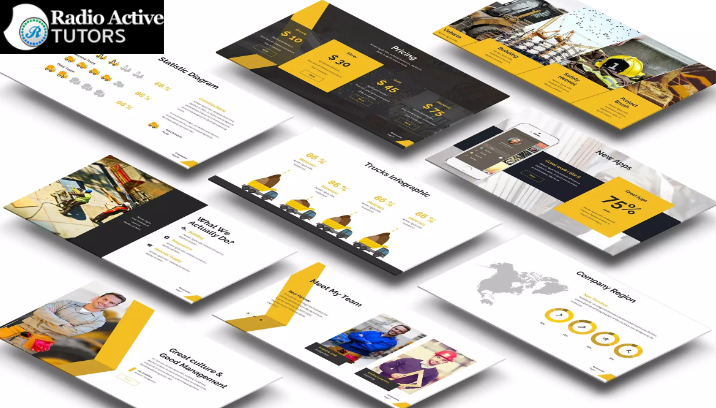
A. Choosing Appropriate Themes and Templates
Designing visually engaging procurement PowerPoint slides involves thoughtful consideration of themes and templates. The choice of themes and templates should align with the professional and corporate nature of procurement. Opting for clean, modern designs with a professional color scheme can enhance the credibility of the presentation. Utilizing graphics and icons related to procurement processes, supply chains, and logistics can visually reinforce key concepts.
Additionally, selecting a template with consistent formatting and layout ensures a cohesive and polished look. Striking a balance between aesthetics and professionalism is crucial to keep the audience engaged while maintaining a sense of seriousness and competence. The visual elements should complement the content, making the information more digestible and memorable for the audience. By incorporating appropriate themes and templates, procurement PowerPoint slides can effectively convey information and enhance the overall visual appeal of the presentation.
1. Professional vs. Creative Themes
When designing visually engaging procurement PowerPoint slides, the choice between professional and creative themes is a strategic decision. Professional themes often feature clean lines, corporate colors, and a structured layout, projecting a sense of reliability and formality. On the other hand, creative themes can infuse a presentation with innovation and freshness, using unique graphics and stylized elements.
The decision between the two depends on the audience and the context of the presentation. For more formal settings or when addressing senior executives, a professional theme may be more suitable. In contrast, a creative theme can be effective for training sessions or workshops, adding an element of dynamism. Striking the right balance between professionalism and creativity ensures that the visual design enhances the message without overshadowing the importance and seriousness of procurement processes.
2. Consistency Across Slides
Maintaining consistency across procurement PowerPoint slides is paramount for creating a visually engaging and coherent presentation. Consistent use of fonts, colors, and formatting ensures a polished and professional look, contributing to the overall visual appeal. A uniform layout across slides helps the audience navigate the presentation seamlessly, focusing on the content rather than being distracted by variations in design.
By establishing a visual rhythm through consistency, the slides convey a sense of organization and clarity. Visual elements, such as icons or graphics, should also follow a consistent style to reinforce key messages. Whether it's the title slide or detailed process slides, a cohesive design approach enhances the audience's understanding and retention of information, making the procurement presentation more effective and visually appealing.
B. Utilizing Visual Elements
In the realm of designing visually engaging procurement PowerPoint slides, the strategic incorporation of visual elements is pivotal. Graphics, charts, and diagrams can transform complex procurement concepts into accessible, digestible visuals that enhance audience comprehension. Infographics illustrating supply chain processes, icons representing key stages, and charts depicting cost savings can all contribute to a more compelling narrative.
The judicious use of images relevant to procurement, such as supplier networks or logistics symbols, can reinforce key messages. These visual elements not only add aesthetic appeal but also serve as powerful aids in conveying information efficiently. Striking a balance between text and visuals ensures that the presentation is engaging, informative, and memorable, fostering a deeper understanding of procurement processes among the audience.
1. Effective Use of Graphs and Charts
Designing visually engaging procurement PowerPoint slides involves the effective use of graphs and charts to convey data and trends efficiently. Well-crafted visuals such as bar graphs, pie charts, and line graphs can transform complex procurement metrics into easily understandable representations. Utilizing color-coding, labels, and legends enhances clarity, allowing the audience to grasp key insights at a glance.
Whether illustrating cost savings, supplier performance, or procurement efficiency over time, graphs and charts provide a visual narrative that complements spoken content. This visual approach not only makes the presentation more engaging but also aids in making data-driven decisions more accessible and impactful for the audience. Strategic use of these visual elements contributes to a comprehensive and visually compelling procurement presentation.
2. Incorporating High-Quality Images
In the art of designing visually engaging procurement PowerPoint slides, the strategic incorporation of high-quality images plays a crucial role. Relevant and impactful images, such as photographs of supply chains, logistics, or collaborative teams, can add depth and resonance to the content. These images not only serve an aesthetic purpose but also contribute to conveying the real-world implications of procurement processes.
The careful selection of images that align with the presentation's themes reinforces key messages and fosters a connection with the audience. High-quality visuals not only enhance the overall appeal of the slides but also help to create a visually rich and immersive experience, making the procurement presentation more memorable and compelling for the audience.
IV. Structuring Procurement Content

A. Introduction Slide
The introduction slide in a procurement PowerPoint presentation serves as a critical foundation, setting the tone for the entire discourse. This initial slide succinctly outlines the purpose and scope of the presentation, introducing the audience to the key topics that will be covered in the context of procurement. It often includes a brief overview of the significance of effective procurement practices and their impact on organizational success.
Engaging visuals, perhaps incorporating relevant symbols or graphics, can captivate the audience's attention and provide a visual preview of the forthcoming content. By carefully structuring the introduction slide, the presenter establishes a roadmap for the audience, ensuring a clear understanding of the procurement themes that will be explored in the subsequent slides.
B. Key Procurement Components
Structuring procurement content in PowerPoint slides involves a focused examination of key procurement components. This section of the presentation typically delves into essential elements such as sourcing strategies, vendor management, contract negotiation, and supply chain considerations.
Each component is highlighted with clarity, utilizing concise bullet points, visuals, and perhaps diagrams to enhance understanding. By structuring the content around these key procurement components, the presentation aims to provide a comprehensive overview of the intricacies involved in the procurement process. This approach ensures that the audience gains a nuanced understanding of the fundamental aspects crucial to effective procurement practices within an organization.
C. Timeline and Milestones
In the structuring of procurement content within PowerPoint slides, integrating a timeline and milestones section is instrumental. This segment provides a chronological overview of the procurement process, outlining key stages and milestones from initiation to completion. Visually, a timeline can be represented through a Gantt chart or other graphical elements to emphasize the sequence and duration of various procurement activities.
This structured presentation helps the audience grasp the temporal aspects of procurement, fostering a clear understanding of the timeframes associated with vendor selection, contract negotiation, and other critical milestones. By incorporating a timeline and milestones into the procurement slides, the audience gains valuable insights into the progression of activities, facilitating effective planning and comprehension of the overall procurement framework.
V. Ensuring Clarity and Consistency
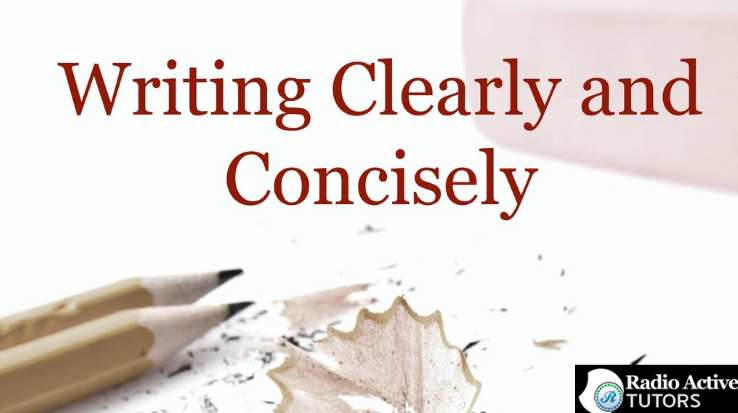
A. Writing Clear and Concise Text
Ensuring clarity and consistency in procurement PowerPoint slides begins with the imperative of writing clear and concise text. Each slide should convey information in a straightforward manner, avoiding unnecessary jargon and complexity. Clear and concise text enhances audience understanding and retention of key concepts, making the procurement content more accessible. Bullet points, succinct headlines, and well-structured sentences contribute to the overall clarity of the presentation.
Additionally, maintaining a consistent writing style across all slides fosters coherence, ensuring that the audience can follow the narrative seamlessly. By prioritizing clarity and conciseness in the text, presenters can effectively communicate procurement information and engage their audience with a streamlined and comprehensible presentation.
1. Avoiding Jargon and Acronyms
Ensuring clarity and consistency in procurement PowerPoint slides involves avoiding jargon and acronyms. While industry-specific terms and abbreviations may be familiar to procurement professionals, they can create confusion for a broader audience. Instead, opt for clear and straightforward language that is easily understandable by individuals with various levels of familiarity with procurement processes.
If using any acronyms is necessary, ensure they are defined clearly on the slides or in accompanying materials. This approach helps to maintain a consistent and accessible communication style, promoting a shared understanding of procurement concepts and fostering engagement among a diverse audience.
B. Consistent Formatting and Font Usage
Achieving clarity and consistency in procurement PowerPoint slides involves meticulous attention to formatting and font usage. Consistent formatting ensures a uniform and professional appearance throughout the presentation. This includes maintaining a standardized font style and size across all slides, using consistent color schemes, and aligning text and visual elements cohesively.
Such uniformity not only enhances the overall visual appeal but also contributes to a polished and organized presentation. By adhering to a consistent format and font usage, presenters facilitate a seamless flow of information, allowing the audience to focus on the content without being distracted by variations in style. This commitment to visual consistency reinforces the professionalism of the procurement presentation and aids in effectively conveying key messages.
VI. Best Practices for Delivering Procurement Presentations

A. Rehearsing for a Polished Delivery
One of the best practices for delivering procurement PowerPoint slides is thorough rehearsal to ensure a polished delivery. Rehearsing allows the presenter to familiarize themselves with the content, refine the pacing, and anticipate potential questions or points of clarification. Practicing the delivery helps to build confidence and fluency, reducing the likelihood of stumbling over words or losing track of the narrative during the actual presentation.
Additionally, rehearsing provides an opportunity to fine-tune the timing of slide transitions and ensure that the presentation aligns with the allotted time. A polished delivery, achieved through rehearsal, not only enhances the professionalism of the presentation but also fosters a more engaging and impactful interaction with the audience.
1. Overcoming Nervousness
Overcoming nervousness is a key aspect of delivering effective procurement PowerPoint slides. One best practice is thorough preparation. Familiarize yourself with the content, rehearse the presentation multiple times, and anticipate potential questions. This preparation builds confidence and reduces anxiety.
Additionally, practice relaxation techniques such as deep breathing to manage nerves before and during the presentation. Embrace a positive mindset, reminding yourself of your expertise in the subject matter. Engage with the audience to create a connection, and remember that it's okay to pause and gather your thoughts if needed. Finally, focus on the message and the value you bring to the audience, allowing your enthusiasm for the procurement content to shine through and mitigate nervousness.
2. Projecting Confidence and Authority
Projecting confidence and authority is crucial when delivering procurement PowerPoint slides. One key best practice is maintaining strong posture and eye contact, which conveys assurance and engagement. Speak with a clear and steady voice, emphasizing key points to underscore your expertise. Utilize confident body language, such as purposeful gestures, to enhance your presence.
Familiarity with the content through thorough preparation instills confidence, allowing you to speak with authority. Additionally, addressing questions with poise and providing concise, well-informed responses reinforces your credibility. Incorporating a confident and authoritative demeanor ensures that your procurement presentation not only informs the audience but also inspires trust in your knowledge and competence in the subject matter.
B. Handling Questions and Objections
Effectively handling questions and objections is a crucial best practice when delivering procurement PowerPoint slides. Presenters should anticipate potential inquiries and objections, preparing thoughtful and concise responses in advance. When addressing questions, it's important to listen carefully, repeat or clarify the question as needed, and respond with clarity and confidence.
If faced with objections, presenters should acknowledge concerns empathetically and provide evidence or insights to address them. Maintaining a positive and collaborative tone encourages constructive dialogue and reinforces the credibility of the procurement presentation. Being well-prepared for questions and objections demonstrates a thorough understanding of the material and enhances the presenter's ability to navigate discussions, ensuring a more successful and informative delivery.
1. Preparing for Common Questions
An essential best practice for delivering procurement PowerPoint slides is preparing for common questions. Anticipate queries that the audience may have about procurement processes, strategies, or specific details within your presentation. By proactively addressing these questions in your preparation, you demonstrate a thorough understanding of the subject matter and enhance your credibility as a presenter.
Craft clear and concise responses to potential questions, ensuring that your answers contribute to a deeper comprehension of the procurement content. This proactive approach not only showcases your expertise but also allows you to navigate the Q&A session with confidence, contributing to a more engaging and informative presentation.
2. Addressing Audience Concerns
Addressing audience concerns is a crucial best practice when delivering procurement PowerPoint slides. Recognize the potential concerns or questions your audience may have regarding procurement processes, policies, or implications. Proactively incorporate information in your presentation to address these concerns, demonstrating transparency and a commitment to addressing audience needs.
During the presentation, encourage questions and actively listen to audience inquiries, responding with clarity and confidence. By openly acknowledging and providing thoughtful answers to audience concerns, you foster trust and engagement. This approach ensures that your procurement presentation not only disseminates information but also actively addresses the specific interests and concerns of your audience, creating a more interactive and impactful experience.
VII. Common Mistakes to Avoid

A. Overcrowded Slides
One common mistake to avoid in procurement PowerPoint slides is creating overcrowded slides. When slides contain too much information, dense text, or an excess of visuals, it can overwhelm the audience and diminish the effectiveness of the presentation. Overcrowded slides can lead to information overload, making it challenging for the audience to focus on key points.
To avoid this mistake, presenters should aim for simplicity, use concise bullet points, and limit the amount of text and graphics on each slide. This allows for better clarity, engagement, and understanding, ensuring that the procurement content is communicated effectively without overwhelming the audience with unnecessary details.
1. Simplifying Information Overload
One common mistake to avoid in procurement PowerPoint slides is oversimplifying information to the point of creating an information vacuum. While it's crucial to present content in a clear and concise manner, excessively simplifying complex procurement details can lead to a lack of depth and understanding.
Presenters should strike a balance by providing enough relevant details and context to ensure a comprehensive grasp of the subject matter. This approach maintains clarity without sacrificing the necessary nuances of procurement processes. By avoiding the mistake of oversimplification, presenters can convey the intricacies of procurement effectively, ensuring the audience gains a meaningful understanding without encountering information gaps or misconceptions.
2. Focusing on Key Messages
While it's essential to focus on key messages in procurement PowerPoint slides, a common mistake to avoid is neglecting to provide sufficient context or details. While it's crucial to distill information into key points, overly simplifying content can lead to a lack of depth and understanding. Presenters should strike a balance by providing enough context and relevant details to support the key messages.
This ensures that the audience gains a comprehensive understanding of the procurement topics without oversimplification. By avoiding the mistake of solely focusing on key messages without adequate supporting information, presenters can deliver a well-rounded and informative procurement presentation.
B. Lack of Audience Engagement
A common mistake to avoid in procurement PowerPoint slides is a lack of audience engagement. When presentations focus solely on relaying information without considering the audience's level of interest or interaction, it can lead to disengagement. To prevent this mistake, presenters should incorporate interactive elements such as questions, polls, or discussions to involve the audience.
Additionally, using visuals, real-world examples, and anecdotes relevant to the audience can make the content more relatable and engaging. Lack of engagement diminishes the impact of the procurement presentation, so presenters should strive to connect with their audience by creating a dynamic and participatory environment that encourages active involvement and interest.
VIII. Evaluating Procurement Presentation Effectiveness
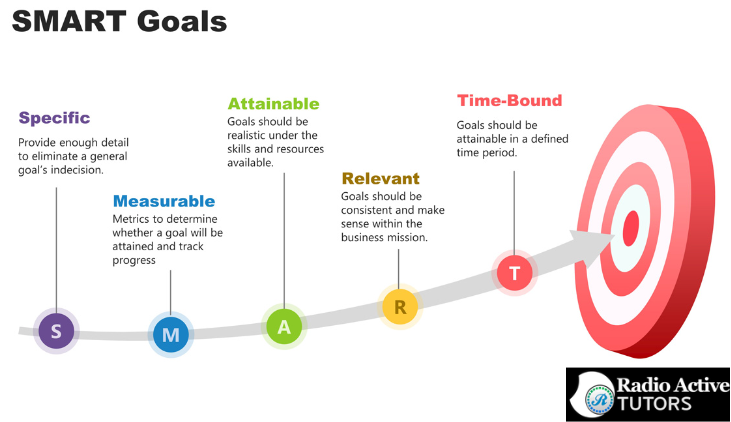
A. Setting Measurable Objectives
Evaluating the effectiveness of procurement PowerPoint slides begins with setting measurable objectives. Clearly defined objectives establish specific goals for the presentation, allowing for a more focused assessment of its impact. Objectives may include metrics such as audience comprehension, engagement levels, or the ability to apply procurement concepts post-presentation.
By articulating measurable outcomes, presenters can gauge success and identify areas for improvement. This proactive approach to evaluation ensures that the procurement presentation aligns with organizational goals and provides valuable insights into its overall effectiveness in conveying key messages to the audience.
1. Key Performance Indicators for Success
Evaluating the effectiveness of procurement PowerPoint slides involves identifying key performance indicators (KPIs) for success. These indicators serve as measurable benchmarks to assess the impact of the presentation. Relevant KPIs may include audience engagement levels, comprehension of key procurement concepts, retention of information, and the ability of the audience to apply the presented knowledge.
Tracking these KPIs provides valuable insights into the presentation's success in meeting its objectives. Additionally, feedback from the audience, such as questions, comments, or post-presentation discussions, can be considered as qualitative indicators of effectiveness. By establishing and analyzing these KPIs, presenters and organizations can gain a comprehensive understanding of the procurement PowerPoint slides' impact and make informed decisions for improvement in future presentations.
2. Gathering Feedback for Continuous Improvement
Evaluating the effectiveness of procurement PowerPoint slides involves actively seeking feedback for continuous improvement. Gathering feedback from the audience allows presenters to understand what worked well and identify areas for enhancement. This can be done through surveys, direct questions, or post-presentation discussions.
Feedback should focus on aspects such as clarity of information, engagement level, and the relevance of the content to the audience. Analyzing feedback enables presenters to refine their approach, adjust content as needed, and address any identified shortcomings. Embracing a feedback-driven approach contributes to the continuous improvement of procurement presentations, ensuring that future slides are more impactful, informative, and aligned with the audience's needs and expectations.
IX. Conclusion
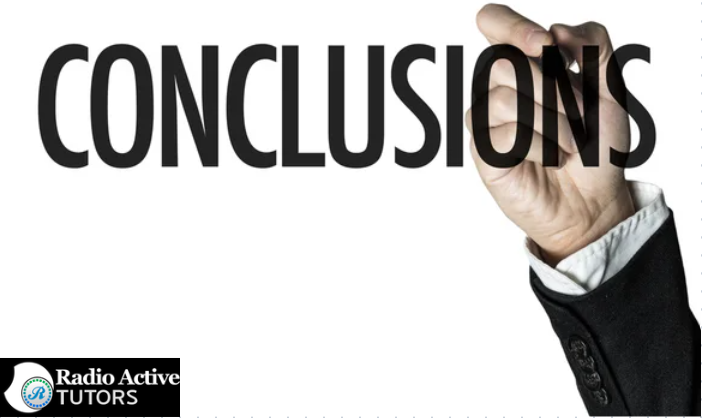
A. Recap of Key Points
This guide emphasizes the importance of creating effective procurement PowerPoint slides to enhance communication and understanding. By adhering to best practices, such as selecting appropriate themes, incorporating visual elements, and structuring content for different audiences, presenters can elevate the impact of their procurement presentations. Strategies like setting measurable objectives and gathering feedback contribute to evaluating and refining the effectiveness of the slides.
Additionally, addressing common mistakes, such as overcrowded slides and a lack of audience engagement, ensures a more polished and engaging delivery. By consistently striving for clarity, avoiding jargon, and addressing audience concerns, presenters can create informative and impactful procurement PowerPoint presentations that resonate with a diverse audience. This guide serves as a comprehensive resource for crafting, delivering, and evaluating procurement presentations, ultimately fostering effective communication within the realm of procurement.
B. Encouragement for Applying Procurement Presentation Best Practices
In conclusion, this guide provides valuable insights and best practices for creating impactful procurement PowerPoint slides. By emphasizing clarity, consistency, and engagement, presenters can effectively communicate complex procurement concepts. The guide encourages the application of these best practices, underscoring the significance of tailored content, visual elements, and a polished delivery.
As presenters embrace strategies for overcoming nervousness, projecting confidence, and addressing audience concerns, they elevate the overall effectiveness of their procurement presentations. The guide serves as a reminder that continuous improvement, driven by feedback and measurable objectives, is key to refining future presentations. By applying the principles outlined here, presenters can confidently navigate the challenges of procurement presentations, ensuring that their messages resonate with diverse audiences and contribute to a deeper understanding of crucial procurement processes.
